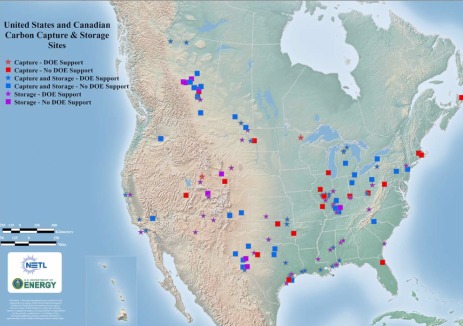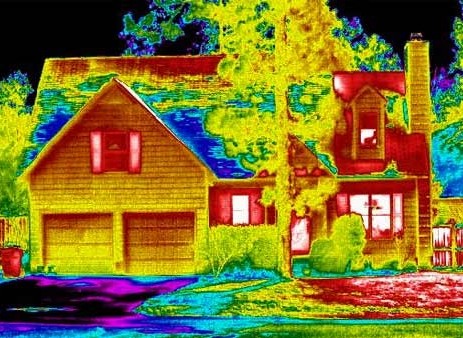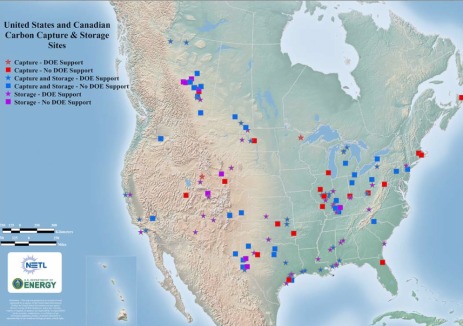 Potential carbon capture and storage sites.Image: U.S. Department of EnergySo just how long could we potentially pump carbon dioxide into the ground in the United States and Canada? Try 5,700 years, according to a new report [PDF] from the United Stated Department of Energy.
Potential carbon capture and storage sites.Image: U.S. Department of EnergySo just how long could we potentially pump carbon dioxide into the ground in the United States and Canada? Try 5,700 years, according to a new report [PDF] from the United Stated Department of Energy.
The Office of Fossil Energy’s National Energy Technology Laboratory has updated its atlas of potential sites for carbon capture and sequestration, commonly known as CCS. While the nascent technology remains highly controversial and largely untried, there are seven Regional Carbon Sequestration Partnerships in the U.S. and Canada that are investigating areas that would be suitable for injecting billions of metric tons of greenhouse gases into underground geologic formations.
“The objective of the CCS Site Characterization Projects is to characterize a minimum of 10 distinct ‘high-potential’ geologic formations, including saline formations, depleting/depleted oil fields, and coal areas,” the report states. “Each project is focused on a minimum of one specific site, formation, or area not previously characterized with public data that represents a significant storage opportunity in a region with adequate seals that could be commercially developed in the future.”
Ideally, carbon sequestration would be done near the source of the emission. According to the Energy Department, there are 4,507 “stationary sources” of CO2 emissions in North America — everything from coal-fired power plants, and cement manufacturers to ethanol plants and fertilizer processors. Collectively, they emit 3,400 million metric tons of carbon annually.
The Energy Department estimates that there are 266 billion to 3,172 billion metric tons of geologic storage capacity just on federal lands. That represents about 15 percent of the total carbon storage thought to be available in the U.S. and Canada.
The department is looking at storing carbon in saline formations, oil and gas reservoirs, “unmineable” coal areas, shale’s formations, and basalt formations.
On the West Coast, candidates for carbon storage are sites in Shasta County, Calif., and Lake County, Ore.
Whether carbon storage ever becomes a technologically or politically viable option remains a big question. But be sure to expect the mother of all NIMBY fights.



